
Since I still haven’t outsourced posts to Korea or anything yet, we have to deal with me having enough time to write up something more than vapid blather like, you know, this, but more is coming, I promise. In the interim, I throw down this photo from sunset. No, the nearby pond was not having an especially windy/choppy day – this is from a weekend beach trip that The Girlfriend and I took. Unfortunately, it was remarkably hot, so we did a little less than planned, but I can’t say the trip was wasted in any way, and I have more than a handful of shots. Watch this space for further developments.
September?! We don’t need no September!

September’s end-of-month abstract is a small section of the full frame, but doing it this way highlighted the details better. This came from a session which produced more than a few interesting images, but [broken record repeating sentence fragments about lack of time and all that horseshit]. I think I’m gonna hire a secretary or something. Anyway, you’ll see more eventually…
Here’s why, part 2: religion
As I said in the first post of the series, the question that comes up in these topics, far too often, is, “Why doesn’t science takes these seriously?” And the answer usually is, “It does,” but serious does not equate with, “Finding that it has any merit whatsoever.” In the case of this part’s topic of religion, science, or to be more specific, a significant number of scientists, have given it way more attention and examination than it ever deserved. But let’s not get ahead of ourselves.
First off, it is the avowal of numerous religious leaders or figures that science specifically excludes religion, as if there’s some set of rules, or a list of forbidden topics, or some such rot, which is quite simply not the case; anyone that says otherwise is either lying or stupid, possibly both. In fact, religions of countless kinds were well-established while the present scientific methods were nascent, and the sciences grew in an atmosphere of assumption that at least some aspect of creation was fact. Countless religious orders were responsible for much of the research from times past, and quite a few of the biggest names in scientific circles were religious, to one degree or another. As the present scientific method was established (or to be more specific, the structure of degree programs and most higher education facilities,) no one bothered to include anything that exempted any aspect of our lives, or any given topic, from examination; the structures are only there to try and ensure that we’re as correct as possible. This does, however, conflict with some typical aspects of religions, as we’ll come to shortly.
Most religions do indeed fall outside of consideration of scientific investigation anymore, though, and there are more than a few reasons why.
Too many. There are countless religions in existence the world over right now, and many times more that existed in some point in the past and are now considered mythology. They can’t all be correct, because there are far too many outright contradictions, to say nothing of the hugely different worldviews and, for instance, origin stories. Worse, every last one of them has changed significantly over time, showing them to be culturally flexible rather than, as is often claimed, distinct and everlasting since the origin of any given scripture. We could, should reasonably expect that any lore provided by a supernatural being would not only hold up very well, but be consistent throughout both time and cultures, or at the very least, bearing some basic resemblance to one another.
Given all of the different religions practiced throughout history, the very first question remains, which one? Which should gain the distinction of being the one that bears close examination? It doesn’t really matter, because all of them have been examined, and none hold up very well. Moreover, there’s a rather telling factor that comes into play, and that is the distinction between religion and mythology. While we dismiss countless stories from past cultures as fables, the only difference between them and religions now, any given faith that people embrace as their primary worldview, is how many people believe them; nothing else can be demonstrated, no other factor useful for defining the difference. Culturally, we consider there to be a huge divide between the religion and mythology, but there’s no measurement that supports this.
Poor coordination with expanding knowledge. This is by far the biggest aspect that causes religion to fall by the wayside in regards to scientific inquiry, and easily contains the most numerous conflicts. While all religions provide creation stories, and most provide accounts of historical events, none of them coincide in even small ways with what we’ve been finding out about our world, from very early on. At present, we have overwhelming evidence of a 13.77 billion-year-old universe, a 4.5 billion-year-old planet, and the development of species from very rudimentary beginnings, and each of these is not only supported by countless converging points of evidence, they all fit neatly into the laws of physics that we have discovered, which themselves dictate and predict what is going to happen given any particular set of circumstances – which is, of course, why we use them constantly. The majority of religions present circumstances that contravene these laws in sometimes egregious ways, which would be acceptable to all of the sciences – if we ever saw such examples rather than simply hearing about them in scripture. But when we’re finding our laws of physics holding solid from as far away as light can carry to as small as we can distinguish, it seems rather odd that they, far too often, vanished entirely when it comes to scriptural events.
There’s only so much weight that can be given to a story. And that’s all that scriptural accounts are: stories. Just like in our courts of law, personal accounts are a starting point, but in order to find them believable, we need to have some form of corroboration, preferably physical – especially when humans are so ridiculously prone to fabrication, exaggeration, and embellishment. And when it comes to large-scale events, it’s hard to even imagine something that somehow does not leave any trace of itself behind. Even an overnight rainstorm leaves evidence for us to see in the morning – but virtually nothing related in scripture, far larger in scope than rain, has ever been found, anywhere.
And then there’s the obvious editing. Detailed examinations of scripture have existed since earliest recorded history and continue to this day, with comparisons among not only numerous examples and copies from around the globe, but even the writing styles and meticulous determinations of age from documents. One thing that has become very evident is that countless forms of editing have taken place among far too much of it, putting the lie to anything being “as god intended.” Some are certainly simple mistakes and transcription errors, but a lot more are attributed to religious leaders deciding on their own agenda, and any religious scholar can outline these in detail, especially when we have distinct records of when and where they took place. It is often claimed (but only by the devout) that these efforts were restoring the scripture to the original forms that it had drifted from through previous edits, but this has two distinct problems right off the bat: that anyone could edit scripture away from the original sacrosanct messages, and that none of these restorations managed to bring scripture in line with physics anyway.
[There’s a curious assumption within this sub-topic as well, which is that, despite the countless variations and changes throughout the centuries for any given sect, what we have at present is exactly right, with no consideration given to the idea that we may be as far afield as the previous cultures were in their interpretations.]
Among the many aspects of scientific investigation sits the examination of alternatives: are we sure we’re considering every possibility? And of course, one possibility that bears inclusion, among all of the proposed explanations for these kind of things, is that all of it, every last page of scripture, every ancient account handed down through the ages, is simply made up – as fictional as every other religion and every past mythology. When scripture shows ample evidence of alterations, additions, subtractions, and radical changes, with cultural influences and distinctive adaptations from other sources, that’s pretty much what we expect to find from fables and folklore, and not at all what we should expect from a supernaturally-invoked guide for humankind. And as yet, no one has even come close to ruling out this possibility.
Religions aren’t a very good guide towards behavior, understanding, or growth. Let’s face it – we have to ignore huge aspects of any given scripture to even get by in the world, partially because it’s contradictory, but also because it’s incredibly anti-social and unacceptable to so many people. The same holds true for countless sects and variations, even within the narrower confines of judaism, islam, or christianity; it takes no effort whatsoever to find a church, among anyone’s own faith, that they consider drastically wrong. We try to excuse or ignore numerous aspects of our past cultures that were religiously-invoked or supported, as well as just some really odd restrictions or advice, but let’s be real: these are pathetically bad excuses for guidance from a supreme being, or even from a village elder. It comes up again and again, to the chagrin of countless religious folk, but very large swaths of our history are religiously-supported bloodbaths, so much so that were have special vocabulary that defines it. Yet even the minor proscriptions or advice are almost always demonstrably useless, when they fail to be actively harmful. While there have been plenty of instances where religious leaders blame this on the fallibility of man, we have to recognize that a) a supreme being should have been more than capable of taking such into account, and b) an awful lot of this would never have existed without the religious provocation in the first place.
Meanwhile, as cultures have been reducing the emphasis on religious guidance and classism, and instead concentrating on simple empathy and human rights, our societies have taken radical leaps forward in terms of quality of life, reduction of tribalism, and just about every measure of well-being that exists – this is a serious condemnation of religious value and guidance. Even today, here in this country, the greatest threats to human rights and progressive culture are often religiously-provoked.
There is a fundamental clash in methodology, functionality, and evaluation of effectiveness. This is perhaps the second biggest stumbling block in having the sciences, any sciences, treat religion with consideration, and the reason why so many argue that science and faith are not compatible. Religion relies on things like dogma, authority, and the abject denial of having to prove either factuality or value; faith is a huge factor, as well as deference to religious authority. But faith is a remarkably stupid thing to have, in any circumstance, and countless aspects of our cultures the world over have been adopted because of this simple fact – we have contracts and consumer laws, audits and oversight committees, health departments and drug tests, and it takes little effort to imagine how incredibly dangerous it would be to dismiss any of these. Because of this, the scientific method revolves around producing as much support as possible for any given conclusion, and there’s no such thing as authority; despite advanced degrees or a history of dependable results, any given scientist still has to demonstrate that their pronouncements are backed by solid evidence, and at any time may be countermanded by evidence to the contrary. And the reason that we’ve adopted such practices is simply because it’s the most effective way that we’ve found of ensuring useful, dependable results.
Meanwhile, overblown pronouncements of certainty from any religious figure, without any supporting evidence or demonstrable results, are de rigueur; this includes the ‘proper’ interpretations of scripture and even the idea that scripture is “the word of god.” This kind of behavior is what defines a dictatorship, actually, and the failures of that approach are voluminous and damning all by themselves. Without the concept of unquestionable authority, religion dies quickly – but nothing should ever be unquestionable.
Very often, you will hear people repeat the adage that science tells us how, but religion tells us why, or some such variation – the idea is that science is useful only for physical effects but we need something else for moral guidance or origin explanations. Except, of course, that religion never does tell us why in any manner, and ridiculously often, falls back on variations of, “we can’t understand what god intended.” Meanwhile, a majority of religions interpret morality as, “doing what we’re told by the supreme being, ” which isn’t morality at all, simply self-absorbed obeisance; morality directly involves doing what’s best for other people and for society as a whole. If you ever want to see how badly religion answers the why question, ask any ten devout people, even from the same church, how their god allowed any horrific historical event to occur.
On the other hand, science can be quite adept at answering the why questions as well, especially as we develop a greater understanding of human minds and motivations, and can trace back the evolution of various organisms. Some of the most complicated things that we see can still come about through very basic physical laws, and in many cases we have the variations that demonstrate stages of this development. And while ethics and morality are still largely considered the realm of the humanities rather than the ‘hard’ sciences, we’ve been discovering that adopting more of the methods of the hard sciences can work a lot better than the philosophical approaches ever did. Morality isn’t actually difficult to understand, but we very often run into clashes with emotional influences and justifications – which we’re understanding better and better now, thanks to more studies and with no useful contributions from religion whatsoever.
Religion offers no explanatory or predictive function. Let’s face it, this is what we use science for in the first place, and in fact, our whole lives revolve around figuring out how things work – that’s why we consider ourselves the most advanced species on the planet. We learned how to bake cakes by observing what happens with each variation of ingredient; we figure out the best ways to deal with people in our lives by noting what they respond to, both positively and negatively. The scientific method just puts a structure to this learning process to help keep us from jumping to conclusions (like superstitions, or the belief that trends must continue.) And as mentioned above, this process has helped us understand that our desire for social cohesiveness, evolved into us as a necessity for our survival, is what produces morality in the first place.
Religions, however, are terrible at explanations, and abject failures at predictions. First off, if we want to posit that anything that happens might be because of the whims of an omnipotent being, then what’s to predict? Or even explain? Should we believe that we can have intensely negative affects on our environment, to the point where we put our entire species in danger, or is somebody, something, playing around behind the scenes? And while countless devotees seem to believe that such supernatural manipulations are ultimately beneficial, we still have numerous accounts right within these scriptural guidelines for humanity that demonstrate otherwise; in fact, in far too many examples, this being was capricious, vindictive and, hard as this would be to believe if more people actually thought about it, petty, jealous, and insecure! How would any omnipotent being even come to be this way? And more importantly, why worship such a being when we ourselves are driven (and even admonished) to overcome such traits?
The explanatory parts, far too often, aren’t; they’re either excuses over why things simply make no sense, or pronouncements that we’re not even supposed to question them in the first place. Ignoring for just a moment that, if we were indeed created, we were created to question things, we cannot rationally deny the fact that such questioning is supremely functional in our lives and provides untold value and advancement. Being told not to, or having some excuse foisted onto us, isn’t of any value whatsoever, and actually has a negative effect, as most parents can attest to.
As for the predictions, anyone is welcome to point to any prediction in scripture that actually came true. Bearing in mind, of course, that even if they find something that might, by some stretch, be interpreted as such, a diligent reader will find at least ten times as many, from the same set of scripture, that obviously did not. And as noted above, even considering such accounts as potentially historical, few portions have proven to be factual in the first place, mostly involving whether there was indeed a city in some location (for all the inordinate value that has.) But again, worldwide cataclysms or even influential events? The examples are far too lacking to find value in such.
The boldest claims from any religion are about what happens after we die, which is naturally a bit hard to demonstrate, yet it is these aspects that perhaps the majority of devotees latch onto. These claims virtually always revolve around some form of justice, of getting what one ‘deserves,’ which is gratifying to us in the face of either capriciousness or indifference – at least this has a distinct rule. Except that so few actually believe it that we have criminal justice systems that deal with what happens in our brief mortal stays, rather than leaving it up to any supernatural consequences, and that extensive efforts are put forth by the religious to have others conform to their way of thinking, and yes, this still involves bloodshed very, very frequently. And we cannot ignore the fact that this supernatural justice structure is abysmally bad at provoking people towards good behavior, as is demonstrated constantly, especially among the religious leaders that are so often caught actively flouting it.
When it comes down to it, most of the reason why anyone embraces any form of religion in the first place is self-indulgence – the ‘answers’ that it provides are what they want to hear, and the authority that it promotes is only obeyed when it coincides with their own attitudes in the first place. And while there can be some small value to indulgence, there can also be a large detrimental affect as well, while neither of these has anything to do with science, or even whether or not religions should be ‘taken more seriously.’ There are plenty of ways to indulge oneself without resorting to ridiculous concepts of unquestionable and unsupportable properties, and much more value to finding something more useful to society as a whole than being self-absorbed.
Even the concepts of vague supernatural powers or actions are nothing more than sophistry. First off, let’s face it: no one arguing for any value from religion is thinking of a vague power or a force that ‘started it all,’ or any of the typical theological suggestions of this nature, because these provide nothing to guide us, or explain anything, or reward us for whatever actions we take; most are simply attempts to dodge the failures of organized, defined religions that have been revealed over the centuries. But addressing the arguments at face value for the moment, we still find that nearly all of them revolve around unproven assumptions such as ‘everything must have a beginning’ and ‘so many people being religious means something.’ The few that don’t, that actually try to transcend philosophy and breach the realm of scientific (more or less) conjecture, still offer nothing that could be tested or falsified, and thus no path to take for advancement of knowledge, no ‘next step’ or publishable treatise. Stoned people have produced more profound thoughts than this.
Scientists have actually been far more accommodating to religion than the situation warrants. Because of the huge cultural influence, and the vast number of people that take offense at simple facts that run counter to their desired worldviews, scientists have been remarkably circumspect about religion as a whole, though this varies from culture to culture, country to country. But given the inordinate number of failures that religion has openly, repeatedly, and undeniably demonstrated throughout history, there really have been far too few scientists or authority figures outright calling it worthless bullshit. Religious leaders can, very frequently, gain a public forum to proclaim that Harry Potter books are works of the devil, and nobody ever steps forward and calls them a brain-damaged asshat diddlyfucking around with worse fairy tales than any work of admitted fiction – at least most fiction attempts coherence. Far too many scientists will aver that religion is outside of their purview or some such dodge, rather than openly admitting that nothing about religion is the slightest bit supportable in a rational world. It’s a shame, really, because we need more people to be blunt in the face of the utter nonsense that religion can provoke someone to, but it should be said that religion as a whole has been treated a hell of a lot better than it ever deserved.
The sciences will continue to examine all of that which actually has an effect in our world, regardless of apparent source or ideological bias, but those items found lacking in effect or even accuracy will be dismissed as unimportant. Science wouldn’t, couldn’t work any other way.
Storytime 39
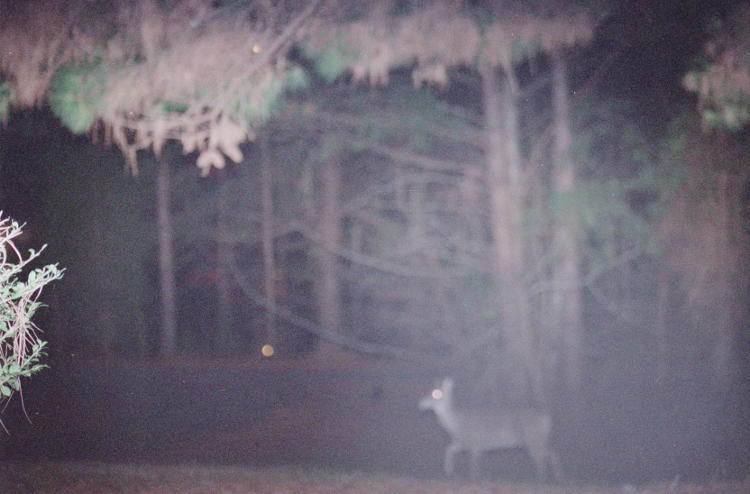
This… is not a good photo. I know that; with my years of experience, I can spot this through all the little telltales. And there’s a story behind it.
Not long after having moved back into North Carolina, I was living in a small duplex in the woods on the edge of two ponds – pretty nice locale for a nature photographer, except the apartment was too expensive for the sparse amenities, and the ponds were abruptly posted with No Trespassing signs a few months after I’d moved in, so I decided not to renew my lease. But while there, I would frequently see evidence of nocturnal visits, and occasionally spot a few myself – just barely, anyway. The hills around the ponds blocked out most of the urban light pollution and there were few lights nearby, so the environs got dark. (As an example, one night I walked the longish hike up to my mailbox since I’d forgotten to check the mail while driving in, and actually walked past the mailbox without realizing it, having to backtrack and count the boxes off by hand to determine which was mine. And I have good night vision.) Knowing that several different species were cutting across the lawn right outside of my living room window, I decided that I needed to try my first camera trap.
If you’re not familiar with the term, a camera trap is where you set up a camera in an ideal location to be triggered remotely when something interesting is within sight – sometimes automatically, with a motion-detector, or sometimes manually with a remote cord. In this case, I set up in my living room window, but had one on-camera flash unit and a more powerful one down in the yard, a lot closer to the areas most-frequented by wildlife, to be triggered by a slave foot that would detect the light burst from the first flash. I sat in a completely dark living room behind the camera and waited for activity – granted, this was not exactly a remotely-triggered camera, but the second flash was at least.
The first issue were my cats, because I’d opened the window and removed the screen for a clear view, which meant they were unhindered from getting outside; they were strictly indoor cats and were not allowed out, so the open window intrigued them and made me keep chasing them off, as silently as possible. Ben, especially, thought the window was irresistible, and wasn’t impressed with the nudges and whispered scolding he was receiving.
The second issue, as you might have spotted if you were sharp-eyed, was the focus. When a couple of white-tailed deer (Odocoileus virginianus) made their appearance, I realized that the viewfinder image through the Canon 75-300 I had affixed was waaayyy too dim to make out much of anything. Autofocus was already shut off of course, but manual focusing wasn’t going as smoothly as I’d hoped. My reasoning was, focus on the distant lights across the pond, then back off a bit and hope that I got fairly close to the mark, while watching whatever I might see in the viewfinder for cues.
Here’s what impressed me. I was sitting in an open window roughly fifteen meters from the deer, with whatever night noises were present. As I turned the focus ring, it made the barest scrape of plastic against plastic, little more than a hiss – and the first deer’s head snapped up immediately and looked right at me. Wickedly impressive hearing, as well as being much more alert to hazards than I would have thought in a species this close to people (there was a shopping plaza less than a kilometer away.) But as the deer started to move on, a little hastily it seemed, I fired off a single frame while one was still in view.
The lighting turned out to be pretty good overall, with the second flash triggering exactly as intended and illuminating the entire frame quite well. The light ahead of the deer is from a house on the other side of the pond, the point I’d used for the initial focus – but directly above it, in the tree, is something else, another critter’s eyes reflecting the flash. Proof of concept and viability, at least, and I vowed that, when I tried again, I’d post a couple of small reflectors at about the same distance as any likely subject, and focus on those ahead of time by flashlight.
Only, I never did try it again, anywhere, and about the closest I got was chasing some bats at night several years later. I really should make another attempt sometime soon.
Face-dropping
I was alerted to a video clip this morning by The Girlfriend, who got it from a Faceblerk post by a mutual friend. I am linking to it here with great reluctance, because the origin is Faux News, and my atheistic and immoral conscience still doesn’t like to send anyone to their site. If you ever wanted proof that god doesn’t exist, or at the very least doesn’t give a fuck about dishonesty and utter bullshit, it’s that the network still hasn’t been eradicated in a plague of leeches. Regardless, while they provided an embed script, it failed to work, quite possibly because it appears on the same page as the words, “Faux News,” so I have to link it. I still provided the embed code below it in case it’s just simply my own (intelligent) browser that’s the problem.
The news item itself, not to be dismissive or anything, is not the thing that I’m drawing attention to, but rather someone visible within, who you should certainly recognize. Did you miss him? Here’s a still image (slightly corrected for a videographer who did not know how to use the iris control of their camera):

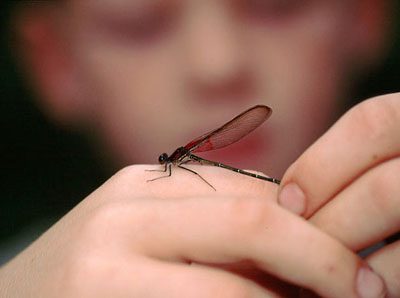 Now you recognize him, right? Of course you do, given that he’s appeared on this very blog before. It’s none other that damselfly boy (not damsel flyboy, even though he’s in the US Air Force,) the guy demonstrating his insect-wrangling abilities from this post. It’s also the black ops guy mentioned in this podcast, and appearing again therein (well, the post, not the audio podcast that no one can appear within.)
Now you recognize him, right? Of course you do, given that he’s appeared on this very blog before. It’s none other that damselfly boy (not damsel flyboy, even though he’s in the US Air Force,) the guy demonstrating his insect-wrangling abilities from this post. It’s also the black ops guy mentioned in this podcast, and appearing again therein (well, the post, not the audio podcast that no one can appear within.)
Being serious for just a few seconds to fulfill my annual obligation, I am admittedly not very supportive of our military, which hasn’t been involved in defending our country for decades, and I don’t think that enlisting is a path towards a future of any kind. Nonetheless, Black Ops here opted to pursue the medical fields when he joined up, which not only gives him an unarguably beneficial role while in the military, it provides him with viable career choices if and when he decides to leave. So yeah, he’s doing more than okay, even if he still pronounces my name with a wicked accent…
Any given definition of “stranger”
The International Holiday Approval Union, finding that nothing whatsoever notable happened on this day – no prominent or noteworthy events, no worthwhile person born or died – has thus chosen this date to represent Beware of Strangers Baring Gifs Day, because something had to be jammed into this barren spot in the month. As far as I’m concerned, we should completely ignore such blatant machinations, but I’m under pressure to find some other holiday to celebrate this month and coming up blank, so…
Anyway, I present a small collection of the best gifs (pronounced, “dawayitspeld,”) ever created, as a reluctant nod to this manufactured and insipid celebration. I’d love to give credit for these, if I had the faintest idea where they came from but, you know, interwebs. Page loading times are going to go to hell I’m sure, and if you’re dumb enough to be on a phone with a data plan or something, better leave now.
I really am going to get one of these shirts:

No comment needed:

Note the roof and the lights:
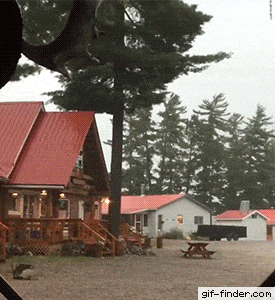
The acting in this is superb:

This, however, is probably not acting:

Took me a few passes to figure out what I was seeing:
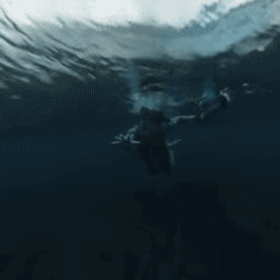
Uttering fowl slurs in the wrong part of town:
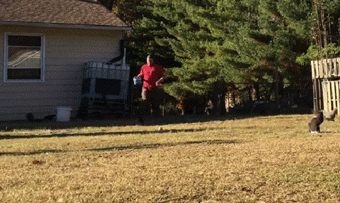
I believe when I came across this, it was captioned, “First sip of Coke,” or something like that:

And finally, the best gif ever made, period:

Okay, I’ve done my part. Let’s move on.
Macro photography, part 13: More than illustration

Once again, we’re going to delve into this deal where I tell you to work on mastering something that I haven’t mastered myself – do as I say, not as I do and all that. Except, I don’t really believe that anyone masters anything in photography; there are simply different levels of skill, so let’s use the word ‘improve’ instead, and we can all stand to improve, so my ass is nicely covered now. But yeah, don’t aim to emulate me – aim to surpass me. Fair enough?
What I’m talking about is a trait that macro photography falls into far too often, which is simply illustration. Illustration is all well and good, because we’re often fascinated by seeing the little details on critters and plants and so on that we don’t normally see in our big hulking everyday world. But illustration has a relatively narrow range of uses, and there’s no reason to view macro photography any different from scenic or fine art or even portraiture, and these can even be combined; we can produce illustrative images that are still fartistic, even able to be sold as art prints.

The first part is even a useful aspect of illustration: choose a background which works best for the subject. In many cases, a small change of position may place a color that contrasts better behind the key facet of any subject, making the details stand out better. Natural elements in the background can serve to frame or highlight the subject. And the same rule still holds true through all aspects of photography: be aware of what’s back there and if it’s distracting or not. Remember that, even though we’re typically working with a greatly reduced depth-of-field because of the magnification, this does not mean that the background is always blurred into insignificance. Distracting colors and harsh contrast are still going to show up, even if wildly defocused, and patterns such as fences, brick walls, and distinct edges will still be visible – depending on our aperture settings, a whole lot more visible than what we’re seeing in the viewfinder as we focus, since the aperture typically does not stop down until the shutter is tripped. Thus, what didn’t show too clearly as we framed the shot suddenly becomes a more noticeable part of the image, so this is where the depth-of-field preview function, if your camera has it, comes into play.
The smaller apertures and commensurately reduced light often requires us to use supplemental lighting rather than natural, yet the light from a flash/strobe drops off quickly and can render the background into darkness easily, making most of macro works look like it was taken at night regardless of when it was actually taken. There are multiple ways to help prevent this, and having a second, brighter light just to illuminate the background is one of them. This starts to sound like studio work and a lot to lug around, but portrait photographers do it all the time; we tend to think nature photography is ‘field’ work, and while we might have a lot of lenses, lights and stands are not part of the idea. But you use what it takes to get the images that work.
Another option is to get low enough to use the bright sky as a background element, and this can also produce some dramatic angles at the same time. Or you can ensure that your background is close enough to be illuminated by the same main lighting unit, which can sometimes be achieved easily, or sometimes might require doing captive work in a tabletop ‘studio’ setting, which can solve a lot of other problems as well. This raises the question of how much ‘staging’ is acceptable for our work, and I’m not going to answer that one for you – it’s a personal decision, and might even depend on end uses. I’ve covered the topic before a few different times anyway, so I’ll link to them below.

There are another two aspects to consider: habits, and ‘personality.’ Habits are self-explanatory, for the most part; capturing some behavior, or even some transitional trait, just adds to the interest and uses that the images can be put to. Personality is a little different, since most of our subjects don’t really have any personality to speak of, but humans are a species that can infer it from simple details, such as head or eye position, and capturing an image that seems to indicate some particular emotion, attitude, reaction, or whatever, can make it a lot more appealing. This means being alert to the possibilities, and being willing to get the right angle to emphasize such ideas. Seriously, even an insect looking up tells us something, or as I said, seems to. But we’re not going to get this impression by shooting down from above.
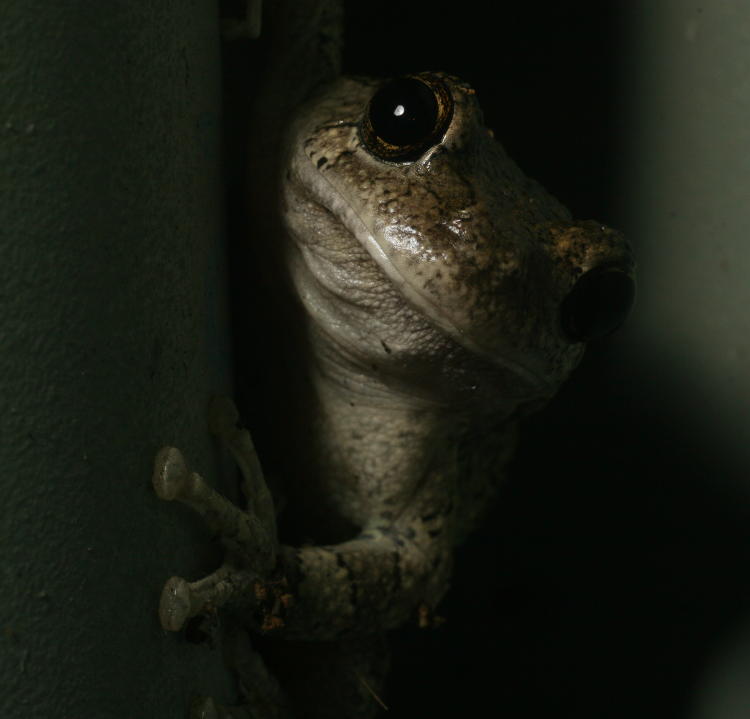
In a lot of cases, this takes either waiting for the subject to achieve some particular pose, or maneuvering around until a perspective that produces a wanted expression is obtained – which a lot of subjects won’t be too cooperative about. I’ll admit that most of my ‘expressive’ images are more happenstance than planned, capturing a fleeting moment, but many still required both a decent angle and the dedication to be shooting enough images and watching for opportunities. Don’t abandon a subject too quickly, and especially watch the eyes; they give us the most recognizable ’emotions,’ and may also twitch only momentarily to catch the sunlight and get that extra sparkle.
By itself, macro work is a tool for fartsy images, because there remain some great subjects and effects only available at high magnification – dew and raindrops, for instance, and the sparkles off of them or the panoramas visible through them. The delicate and sometimes intricate shapes and details of flowering plants, or even just the transition of colors among individual autumn leaves. The latticework of spiderwebs that becomes visible with the right light. The iridescence that may be found in feathers, or insect wing sheathes. Even the camouflage patterns or mosaic textures of reptile skins can be fascinating; all it takes is being open to the possibilities, and maintaining a watchful eye.

Some related posts:
The first post about staging images, and the second.
Using a macro tank for aquatic subjects.
A few examples, part one.
And part two (or is it part one?)
Storytime 38
It was March 2006, and the infamous Jim Kramer and I had taken a weekend trip out to the coast to explore some new areas photographically. We had no itinerary and only a rough route planned out – basically, we were winging it to see what we might find, which as far as I’m concerned is the best way to do it.
We were following a sandy access road down among some farmed fields that were interspersed with irrigation channels and scrub brush, which meant at times we could see for hundreds of meters, and shortly afterward visibility dropped to a few car lengths. I had remarked a little earlier that there remained a possibility of spotting American black bears (Ursus americanus,) because I had seen some before in very similar terrain. But at this moment, we’d stopped at a promising spot and had been out of the car, exploring some ditches and copses for wading birds, turtles, and hawks when I turned back towards the vehicle and happened to glance down at the sandy road. And abruptly registered what I was seeing.
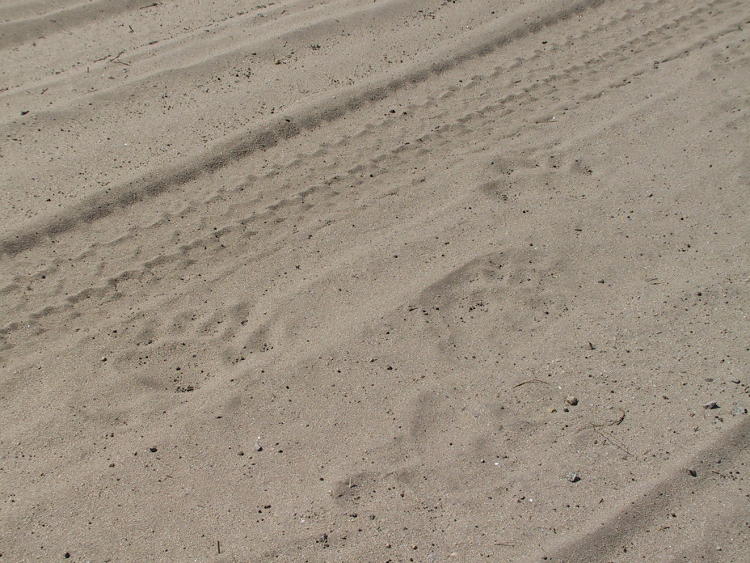
“Hey, Jim?” I called out, and when he turned to see what I wanted, I gestured down at the road. I can’t recall if I unnecessarily said, “Those are bear tracks,” or not – it seems likely, even though I knew damn well he would recognize them as easily as I did. If nothing else, the size of them against the tire marks left no doubt.
Immediately, I was struck with how many places within a short sprint from us could possibly conceal something the size of a bear, as well as realizing that it had rained the night before, so the unobliterated tracks had to be less than eight hours old. Black bears are not particularly aggressive – quite the opposite, really – but then again, it was birthing season, and even still you never really want to be within a few dozen meters of one while lacking, say, a nice thick zoo fence in between. Our focus was still about trying to spot something before it spotted us, but now less from an accomplishment standpoint and a bit more from a self-preservation one.
We never saw any bear at all, and I couldn’t tell you how close one might have been at any given time, but it was clear that the possibility was more than passing, and it lent just a hint more drama to the day. It’s true that, any time one is in bear country, there will be a jamboree you could be crossing recent paths, but seeing the direct evidence makes it more immediate than possibly just imagination, you know?
Just because, part 32
Still a little busy, but I wanted to get something up so the blog does not lie fallow, as they say (actually, nobody ever says that, except me now.) So a couple of quick pics and a video (not mine,) while we wait for me to put some actual effort into this whole thinly-veiled-narcissism thing.
First off, a video that The Girlfriend linked me to this morning, a wildlife camera on a particular log in the woods of Pennsylvania (you know, the woods in Pennsylvania – we all know where those are.) Quite a range of patrons.
This is the original link, in case it fails to play or if you want more info. This comes courtesy of Bush’s Pennsylvania Wildlife Camera (which is more credit than you’ll typically see on Facebook, for sure.)
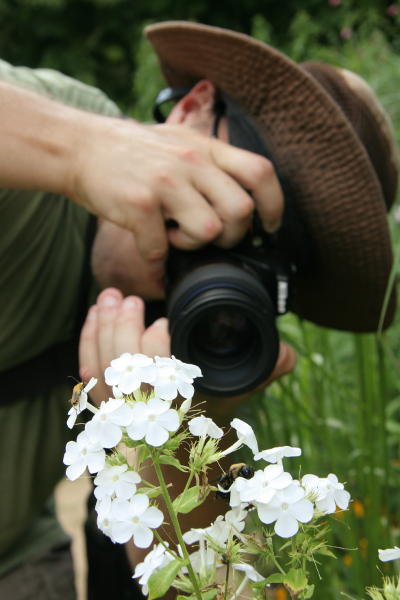 Meanwhile, I’ll throw up a photo of Mr Bugg from a recent outing, since he doesn’t seem inclined to post any damn thing himself anymore – I’m not even sure why I’m linking to him at this point (and he certainly doesn’t link back to me, as much as he trash-talks me.) Anyway, he’s after the carpenter bee in the foreground there. The hat, you ask? Oh, that’s just an amateur nature photographer thing, where you apparently stuff your hat under your pillow when you get home, because crumpling it up makes it work so much better. Or something. We’ll go with ‘something.’
Meanwhile, I’ll throw up a photo of Mr Bugg from a recent outing, since he doesn’t seem inclined to post any damn thing himself anymore – I’m not even sure why I’m linking to him at this point (and he certainly doesn’t link back to me, as much as he trash-talks me.) Anyway, he’s after the carpenter bee in the foreground there. The hat, you ask? Oh, that’s just an amateur nature photographer thing, where you apparently stuff your hat under your pillow when you get home, because crumpling it up makes it work so much better. Or something. We’ll go with ‘something.’
I have more photos from this outing, but they’ll require time to write them up a bit, which is lacking. I was also going to include the photo coming below with more exposition, then I realized that it doesn’t really need a lot. You’ve seen a variation before. When my brother visited, we had time for just a couple of hours out at Jordan Lake, which proved very quiet until this guy landed in the trees above our heads (not Mr Bugg there to the left, but the bird below all this stuff.) To get this image, I had to wade out into the open lake away from the tree to have a clear view, and my brother, unfortunately, was wearing the boots that he was going to have to wear on the plane in a couple of hours, so he couldn’t emulate me. As a result, he never really did get a good look at this cooperative and mellow great egret (Ardea alba.) And since he eschews virtually all internet use, he’s likely still not seeing it.
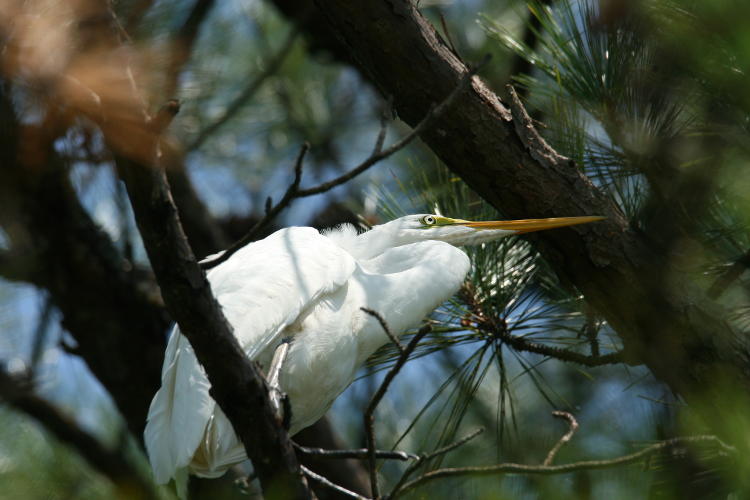
Anyway, more will be along, before the sun boils off into space.
Storytime 37
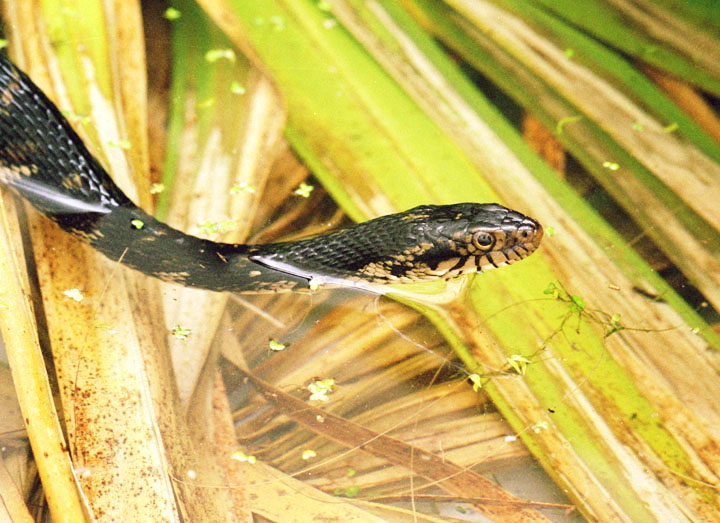
I’ve actually featured this photo here before, with perhaps a portion of the story but not all of it. It’s time to rectify that and set the record straight.
While living in Florida, there was this undeveloped sand road that was basically an access lane out to the edge of the lake, bordered on both sides by drainage channels. It wasn’t far outside the city, but the farthest I could get without serious driving and thus the spot I chose when I was doing some long-exposure night sky photography. During one exposure, probably aiming for twenty minutes or better, I had locked open the shutter and was poking around well away from the camera with a flashlight, this now being about 1 AM. Hard as it may be to believe, I wasn’t inclined to sit there and stare at the sky the entire time the exposure was progressing – I know, right?
Anyway, at the edge of one of the drainage channels I spotted a snake’s head, lifted from the water and holding perfectly still. I knew snakes were primarily night hunters but still rarely saw them at night, and while I was in Florida for a couple of years and doing a serious amount of exploring, this represented only the second snake that I’d seen the entire time – very peculiar, as far as I’m concerned, but there you go. After observing it for a few minutes and not seeing any movement, I began to gradually shift my position. I knew the light from the flashlight was largely masking my own position and outline, but I could still spook the snake if, for instance, I cast a shadow from the reeds across its eye.
Eventually, I determined that the snake hadn’t moved because it couldn’t; it was seriously ensnared in someone’s discarded casting net, having slipped through several loops and eventually caught itself as the nylon bound itself tighter around the snake’s body. I wasn’t about to let this slip by, so I carefully edged down to the water and disentangled the entire net, with the snake within, from the weeds and twigs and brought the whole ball up to the car, then set about trying to work the snake free. For its part, the snake helpfully bit me several times as I tried to slip the loops free from its scales.
It wasn’t long before I realized that, between the number of openings it had gone through and its general inability to hold still while I concentrated on each loop, I wasn’t going to accomplish a lot in this manner, especially without help, and chose a different tactic. I had a sharp knife on me as usual, but the nylon was fine enough that simply slipping the blade into a loop and pulling wouldn’t work; the nylon was tough and took a lot of pressure to cut, more than the snake’s skin did, and all I would do was pull the loops deep into the snake before they ever separated. Instead, I found a small piece of wood and used that as a cutting board on the trunk of the car, pressing the junction of numerous key loops of the net under the knife blade to cut through them. It required a lot of this and was tedious, but eventually, I freed the snake entirely from the net without injury (well, to the snake at least – I had several bites and a few nicks from my own knife as I performed this entire operation with the flashlight held in my teeth.)
This was, however, a species that I had never seen before, much less photographed, and I couldn’t let this opportunity go, though I was unprepared to exploit it at the time. This mean that I dug through the trunk of the car until I found something to secure the snake within to transport it home; not the most altruistic of actions, I admit, but hey, I’d just saved it from dying by scavengers or exposure – it could cope with a little posing. The next day, I constructed a ‘set’ of sorts in the bathtub, using palm fronds, and did a few portraits and detail shots in controlled conditions, one of which you see above; if you look closely, you’ll notice the white enamel peeking through at one point. Once I’d gotten a handful of shots (and another bite or two,) I took the snake back to where I’d found it and released it into the water, checking carefully to ensure that there was no more dangerous debris to be seen.
This is a southern banded water snake, by the way, or simply a southern water snake, but the scientific name is Nerodia fasciata fasciata – I believe, anyway. I keep finding conflicting identifications of species, and previously identified it as simply Nerodia fasciata. I’ve never seen one above Georgia, which is a shame, because I like their coloration much better than the species that I find around here. Meanwhile, cleaning out the debris from the tub was a whole lot more involved than I’d initially imagined, but I’m kinda glad that I took the opportunity, because it would be something like 12 years before I was to find another.




















































